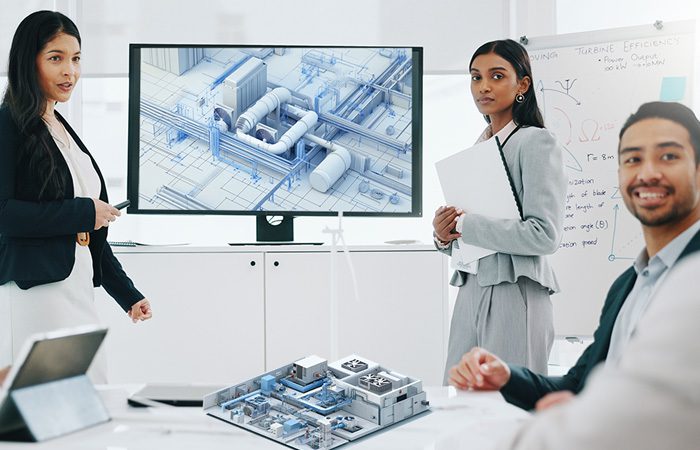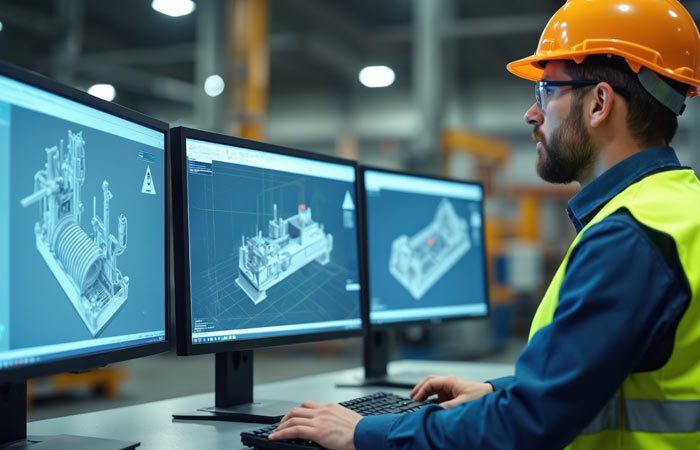
Best Practices in HVAC Design for Commercial Buildings: A People-First, Standards-Strong View
Great buildings feel effortless. People focus, collaborate, and recover energy in them without thinking about the air that surrounds them. When HVAC design does its job, it creates that sense of ease—quietly, reliably, and sustainably. What follows is a people-first perspective on HVAC best practices for commercial buildings, grounded in the discipline of ASHRAE, ISHRAE, and SMACNA, but written for leaders who care as much about outcomes as they do about specifications.
Why HVAC Decisions Live Longer Than the Project Timeline
Every design choice in HVAC has a long half-life: it shapes energy spend, tenant experience, and maintenance culture for years. That’s why the most effective projects start with a simple alignment: what do we want the building to feel like, and how will we measure that—comfort, air quality, acoustics, and energy—in practice? Standards help turn that intent into engineering:
- ASHRAE 55 translates comfort into measurable targets—operative temperature, air speed, and humidity—so comfort is not a matter of opinion.
- ASHRAE 62.1 (and ISHRAE equivalents) anchor fresh air and filtration in actual occupancy and use patterns, not guesses.
- ASHRAE 90.1 frames energy performance so efficiency is designed in, not wished for.
- SMACNA guidelines ensure the air system you model is the air system you actually build—tight, quiet, and predictable and Value for money.
That clarity upfront prevents familiar problems: oversized plants that never settle, beautifully drawn ducts that can’t be installed, sequences no one can maintain, and dashboards that impress but don’t inform.
The Experience in the Room Matters Most
Most comfort complaints trace back to air distribution, not tonnage. This is where SMACNA quietly carries projects:
- Duct construction standards, leakage classes, and thoughtful transitions protect the design intent so fans work less and spaces sound calmer.
- Diffuser selection and placement influence how evenly a room feels conditioned. Good choices disappear; poor ones draw attention every hour.
These are not minor craft issues; they’re the difference between a space that helps people think and one that makes them reach for a jumper or a complaint form.
Ventilation and Humidity: The Twin Pillars of Healthy Comfort
Ventilation is easy to talk about and easy to get wrong. ASHRAE 62.1 and ISHRAE guidance make sure outdoor air rates respond to real occupancy, not just nameplate capacity. But outdoor air brings moisture—and that’s where designs win or lose. In humid regions (and humid seasons), separating ventilation from sensible cooling—often via Dedicated Outdoor Air Systems (DOAS)—keeps humidity steady so carpets don’t feel damp and windows don’t sweat. Upgrading to MERV 13 filtration where practical helps reduce particulates without turning fan energy into a penalty.
Healthy air isn’t only about more air; it’s about the right air, at the right time, handled in a way the operations team can sustain.
Controls: Quietly Powerful, If They’re Clear
Controls are the building’s daily conversation with the weather. If that conversation is muddled, energy and comfort drift. Teams that do this well make the logic transparent: economizer behaviour, temperature and pressure resets, demand-controlled ventilation, optimum start/stop, and alarms that surface issues operators can act on. ASHRAE Guideline 36 offers a strong template for sequences that are both efficient and understandable.
The difference between a “smart” building and a pleasant building is not the number of sensors—it’s how consistently the system returns to good behaviour, season after season.
System Choices Without Ideology
VRF, hydronic plants, DOAS with terminals, heat pumps, hybrid or district energy—each can be excellent in context. Leadership conversations that go well tend to ask:
- What load patterns and tenancy mix are we designing for now—and what’s likely in five years?
- What skills will our O&M team have, and how much complexity can we genuinely support?
- How will refrigerant policy, decarbonization goals, and local code shape us over the building’s life?
Look at life-cycle implications alongside first cost. A plant that’s a little simpler but easy to maintain will outperform a more sophisticated design that’s rarely tuned.
Digital Where It Matters
BIM isn’t about pretty pictures; it’s about avoiding collisions (ducts vs. beams vs. cable trays), keeping service access real, and getting shop drawings that reflect the actual selections. Post-occupancy, trending a handful of signals—ΔT on chilled water, damper positions, supply fan power vs. airflow, zone temperature stability—can guide small adjustments that make big differences in comfort and energy.
Digital is most valuable when it helps teams see—and fix—what’s actually happening, not just admire dashboards.
Commissioning Is a Promise Kept
Commissioning is where the document set meets the real building. The projects that age well treat commissioning and seasonal tuning as non-negotiable—functional tests witnessed, sequences fine-tuned, operators trained, and setpoints locked with change control. It’s a modest investment that protects both the design and the utility bill.
A Word on ESG and Electrification
Many portfolios are moving toward electrified heating, heat recovery, and lower-GWP refrigerants. The best implementations make sure this shift improves comfort and reliability rather than asking occupants to accept trade-offs. In practice, that means careful part-load design, realistic defrost and backup strategies, and envelope coordination so the HVAC system isn’t compensating for unmet architectural performance.
TAAL Tech: Bringing Standards to Life, Quietly and Consistently
At TAAL Tech, we be engineered approach HVAC design as an experience to, not just a plant to be sized. Our teams work from OPR/BoD clarity through digital coordination to commissioning, so comfort and compliance are not left to chance.
How we support owners and project teams
- Standards-aligned design: Ventilation and comfort per ASHRAE 62.1 & 55 (with ISHRAE nuances for Indian climates), energy strategy aligned with ASHRAE 90.1, and SMACNA-driven duct construction for low leakage and low noise.
- Right-sized systems: From central plants to DOAS + terminals and VRF/VRV, we recommend systems that fit the building’s future—maintainable, scalable, and tuned to occupant experience.
- BIM-enabled coordination: Early clash detection and access planning; shop-drawing support that reflects real equipment and control points.
- Clear controls & tuning: Sequences inspired by ASHRAE Guideline 36, points lists operators can live with, and seasonal tuning that keeps performance steady.
- Retrofit sensitivity: Phased works in occupied buildings, IAQ upgrades, and chiller plant optimization without disruption.
What clients typically see
- More stable comfort (fewer hot/cold calls) because distribution and humidity are treated as first-class design goals.
- Predictable energy bills through right-sizing, recovery, and transparent sequences.
- Smoother handovers—better documentation, trained teams, and systems that behave as intended.
If your portfolio is planning a new build or considering a deep retrofit, the most valuable decision may simply be to put people and standards at the center—and let design, coordination, and commissioning express that commitment in the details.
Best practices aren’t box-ticking; they’re quiet promises to the people who use your buildings. When we let ASHRAE, ISHRAE, and SMACNA shape those promises—and we follow through with clear coordination and commissioning—the result is a building that feels calm, uses energy wisely, and earns trust day after day. That’s the kind of performance stakeholders notice—even when they never notice the HVAC.


